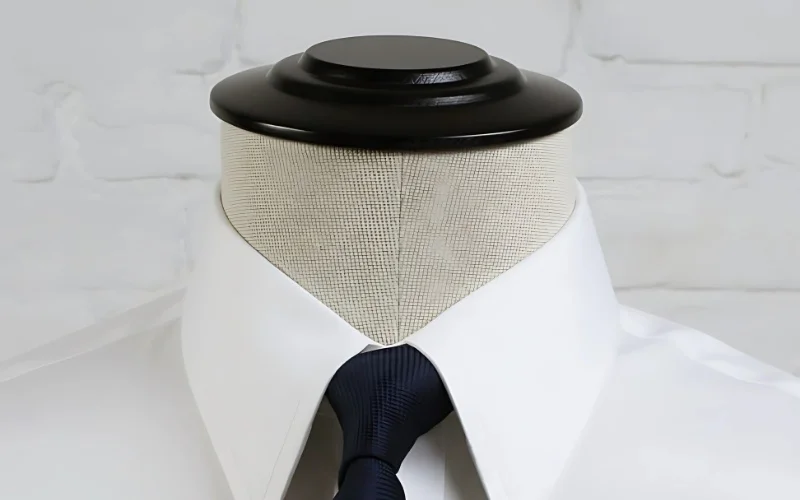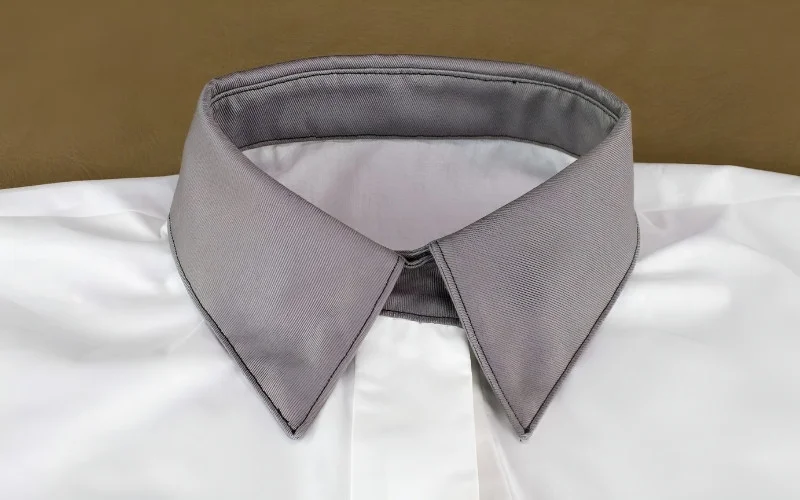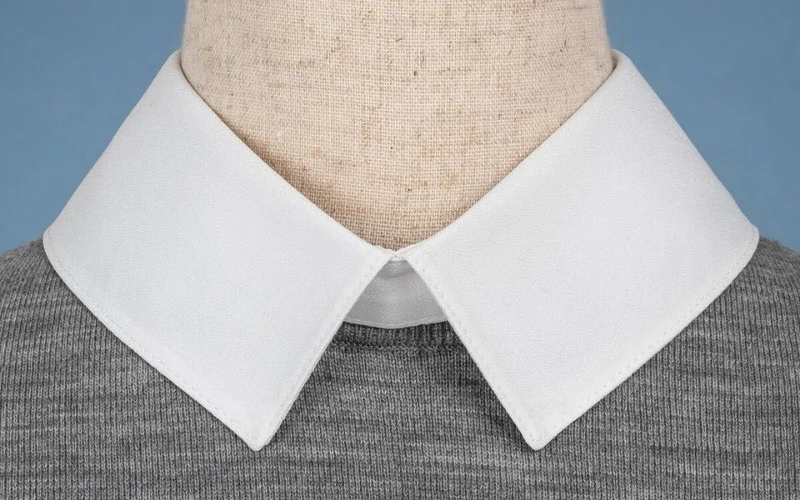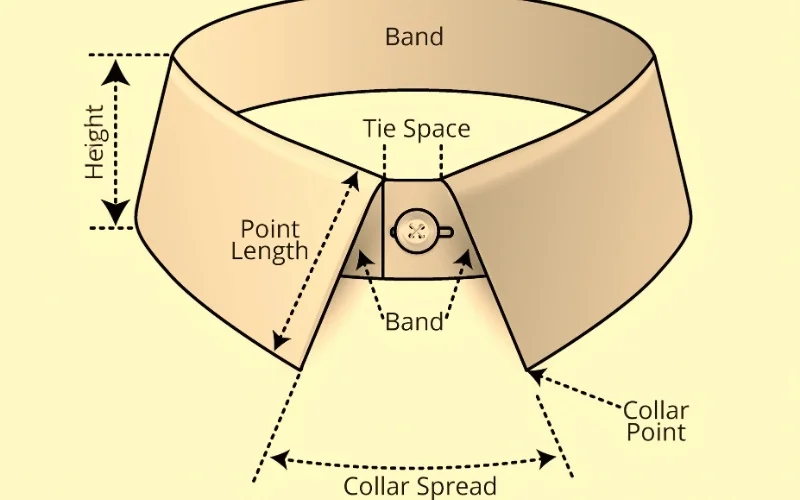Why Collars Matter in Clothing: A Business Guide
For small clothing businesses, navigating the details of garment construction can feel overwhelming. The collar, often seen as a simple finish for the neckline, actually plays a crucial role in determining a garment’s style, function, and perceived value. Overlooking these nuances can lead to miscommunication with suppliers, inventory mismatches, and missed opportunities to elevate your clothing line.
This article provides essential knowledge about collars, exploring their definition, purpose, common types, key components, and ultimately, why a solid understanding of this garment part is beneficial for your business. You’ll gain insights into differentiating styles, communicating specifications effectively, and making more informed decisions about the garments you offer.
1. What exactly is a collar in clothing?
In garment construction, a collar refers specifically to a separate component, typically a band or shaped piece of fabric, that is attached to the neckline of a garment like a shirt, coat, or blouse. Its primary role is to finish the neckline and frame the neck.
This construction makes a collar distinct from other neckline treatments. For instance, lapels or revers (the folded-back front edges often seen on jackets and coats) are usually formed from the same piece of fabric as the main body of the garment, simply folded outward.
Similarly, a simple turned hem at the neckline is just the edge of the main fabric folded over and stitched, lacking the separate structure of a true collar. The key distinction is that a collar is almost always cut as a separate piece (or pieces) and then sewn onto the garment’s neck opening.

2. Why do garments have collars? exploring function and style
Collars serve both practical and aesthetic purposes, evolving from purely functional origins to become key style elements.
Historical function: Initially, collars offered protection from the elements and improved warmth around the neck.
Modern function:
- Structure and support: Collars provide shape and support to the neckline, helping the garment sit correctly on the body. They often incorporate interfacing (a stiffening material) to maintain their form.
- Closure point: They provide a neat and stable area for top buttons or other closures on shirts and blouses.
Aesthetic impact:
- Framing the face: A collar draws attention upward and frames the wearer’s face.
- Defining formality: The style, stiffness, and shape of a collar heavily influence the perceived formality of a garment. Crisp, structured collars generally convey formality, while softer or unconventional styles suggest a more casual look.
- Style statement: Collars are a significant design feature, adding character and contributing to the overall style statement of the clothing – be it classic, modern, vintage, or casual.

3. The main categories: standing, turnover, and flat collars
Collars can be broadly grouped into three main structural categories based on how they sit relative to the neck and shoulders:
- Standing collars: These fit closely around the neck and stand upright without folding over onto the main garment body. They consist primarily of a neckband. Examples include the Mandarin collar (a narrow, unfolded band common in Asian-inspired garments) and the Nehru collar.
- Turnover collars: This is the most common category, especially for shirts. A turnover collar features two main parts: a collar stand (the band that attaches to the neckline and stands up) and a collar leaf or fall (the part that folds or rolls over the stand). Classic shirt collars fall into this category.
- Flat collars: These collars lie flat against the garment body, resting on the shoulder line without a significant stand. They often have a rounded or decorative shape. Common examples include the Peter Pan collar (known for its rounded ends) and the sailor collar (with a distinctive square flap at the back).

4. Common collar styles you’ll encounter
Within the main categories, numerous specific collar styles exist, each with its own visual characteristics and common applications. Here are a few frequently seen styles relevant to wholesale and retail markets:
- Classic shirt collar: The standard turnover collar found on most dress shirts and many blouses. Characterized by its points and the space between them, known as the spread. Its structure is well-suited for formal and business settings.
- Button-down collar: Similar to the classic shirt collar, but with small buttonholes on the collar points that fasten to buttons on the shirt front. This keeps the collar points neatly in place, offering a slightly more casual or traditional sportswear look (originally from polo players).
- Polo collar: Typically a softer, often knit, turnover collar found on polo shirts. Usually less structured than a dress shirt collar, contributing to a sporty, casual feel.
- Peter Pan collar: A flat collar characterized by its rounded points. Often associated with children’s wear, blouses, and dresses, lending a sense of youthfulness or vintage charm.
- Mandarin collar: A type of standing collar, essentially a short band that stands up around the neckline, usually with edges that meet or slightly gap at the center front. Offers a clean, minimalist look.
- Shawl collar: A rounded, turned-over collar that extends down the front opening of a garment, merging smoothly with the lapels without a notch. Common on cardigans, smoking jackets, and some blouses, offering a softer, often more elegant or relaxed appearance.
5. Deconstructing the collar: key parts and terms
Understanding the terminology used for collar parts is crucial for clear communication with manufacturers and suppliers:
- Collar stand (or neckband): The upright band portion of a turnover collar that attaches directly to the garment’s neckline.
- Collar leaf (or fall): The visible part of a turnover collar that folds down over the collar stand.
- Collar points: The corners or tips at the front edge of the collar leaf. Their shape (pointed, rounded, spread) defines the collar style.
- Spread: The distance between the two collar points on a turnover collar. This dimension affects the overall look and determines the type of tie knot that fits best.
- Collar stays (or bones): Removable or sewn-in strips (often plastic or metal) inserted into small pockets on the underside of dress shirt collar points. Their purpose is to keep the points stiff, flat, and pointing downwards, ensuring a crisp appearance.
- Interfacing/fusing: A layer of special fabric bonded (fused) or sewn to the main collar fabric pieces before assembly. Interfacing adds structure, body, and stability, helping the collar maintain its shape and preventing it from collapsing.

6. Why understanding collars matters for your clothing business
Taking the time to learn about collar types, construction, and terminology offers tangible benefits for clothing businesses:
- Improved supplier communication: Using precise terms (like “spread,” “stand height,” “button-down points”) reduces ambiguity when specifying designs or discussing samples with manufacturers, reducing errors and saving time.
- Informed inventory selection: Knowing different collar styles allows you to curate inventory that better matches your target customer preferences and the intended use of the garment (e.g., formal business shirts vs. casual blouses).
- Better quality assessment: Understanding proper collar construction helps you evaluate the quality of potential stock. A well-shaped, appropriately interfaced collar that sits correctly is often an indicator of overall garment quality.
- Enhanced perceived value: The right collar choice significantly impacts a garment’s overall aesthetic and perceived value. Matching collar style appropriately to the garment type and target market can elevate your product offerings. Recognizing these construction details builds your business expertise.
7. Related questions
7.1. How do I keep shirt collars looking sharp?
Maintaining a crisp collar involves proper care. Wash shirts according to fabric instructions, avoiding high heat that can damage interfacing or cause shrinkage. Iron collars starting from the points inwards on a low-to-medium setting suitable for the fabric, pressing gently.
Always use collar stays in dress shirts that accommodate them, replacing any bent or damaged stays. For stubborn creases, using a pressing cloth can prevent scorching.
7.2. What collar styles are generally considered more formal or casual?
Formality often correlates with structure and classic shapes. Standard point and spread collars on woven shirts, especially when starched or using stays, are typically considered more formal and suitable for business or dress occasions.
Button-down collars bridge the gap, often seen as smart-casual. Softer collars like those on polo shirts, flat styles like the Peter Pan collar, and standing styles like the Mandarin collar generally lean towards casual or specific fashion aesthetics rather than traditional formalwear.
7.3. Are detachable collars commonly used today?
Detachable collars, once standard for men’s shirts in the late 19th and early 20th centuries (allowing just the collar to be heavily starched and laundered), are rare in mainstream fashion today. They primarily exist in niche areas like historical costuming, some forms of clerical attire (the “clerical collar”), and occasionally as a fashion accessory allowing wearers to change the look of a base garment.
7.4. How does the ‘spread’ of a collar affect the overall look?
The collar spread (the distance between the collar points) significantly influences the shirt’s style and how it pairs with neckwear. A narrow spread offers a more traditional or conservative look. A medium spread is versatile.
A wide spread (or ‘cutaway’) collar creates a more modern, bolder statement and provides ample space to showcase larger tie knots like the Windsor. The choice of spread can subtly alter the visual proportions of the face and neck.
Read more:
While seemingly a small detail, the collar is a vital clothing component that significantly shapes a garment’s appearance, structure, and style message. From understanding the basic definition and function to recognizing different types like standing, turnover, and flat collars, and identifying key parts such as the stand, leaf, and points, this knowledge proves invaluable.
For clothing businesses, grasping these nuances translates into more effective supplier communication, smarter inventory choices, improved quality control, and ultimately, a better ability to meet customer needs and enhance the perceived value of their apparel lines. Appreciating the collar’s role is a step towards greater expertise in the world of fashion and garment construction.






















